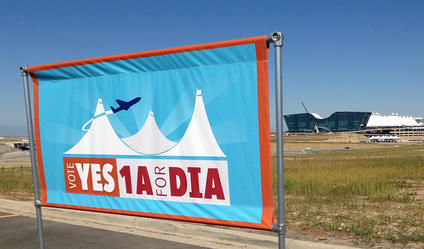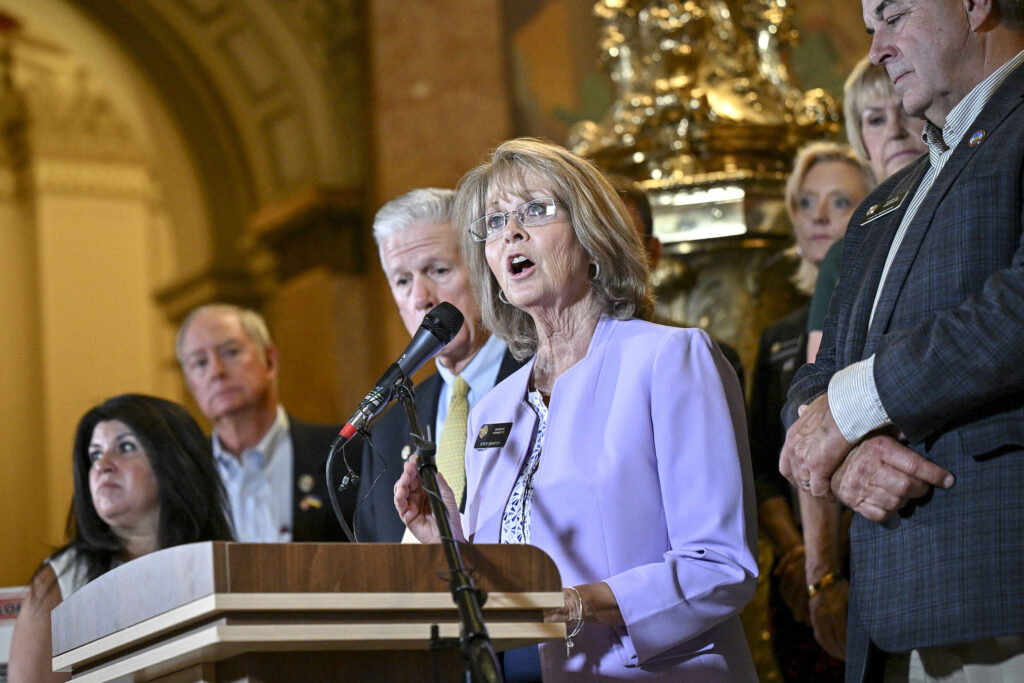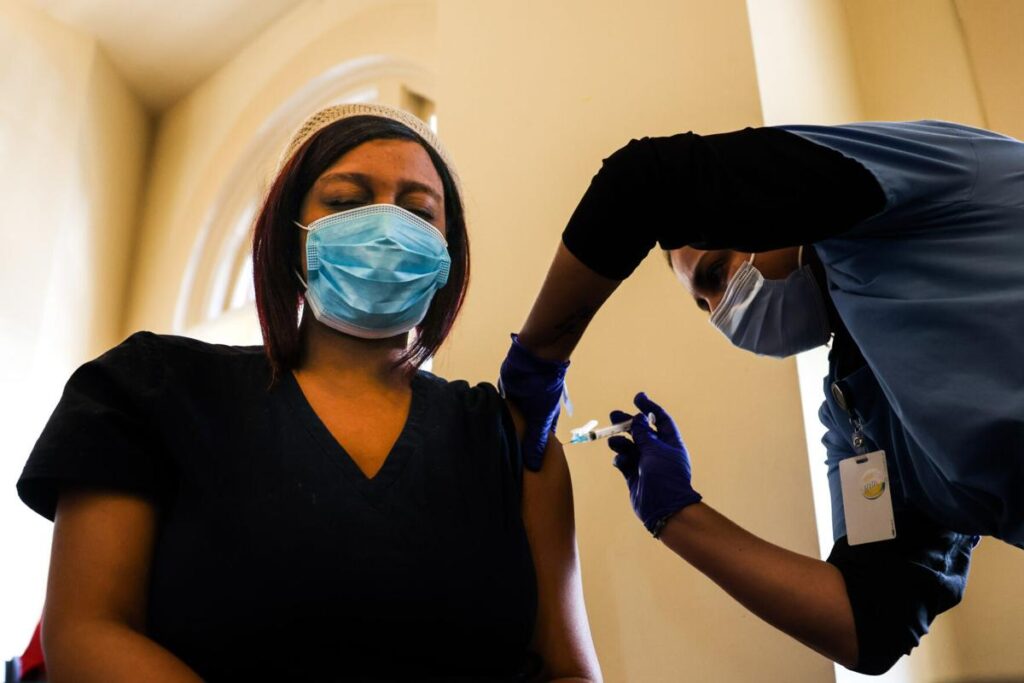Campaign launches to sell ‘aerotroplis’ plan to Denver, Adams County voters

Local officials gathered in an airport parking lot Wednesday morning to launch a campaign to convince Denver and Adams County residents to vote in favor of a “pilot project” that would bring new manufacturing and retail business to the airport.
“We’re here today to celebrate DIA as the biggest economic driver in the region,” said Denver Mayor Michael Hancock. “It feeds $26 billion a year into the local economy. But the airport can do much more – and it must do much more.

“Denver and Adams County are united in this plan to sharpen the region’s competitive edge. That’s why we support ‘1A for DIA,'” he said, introducing the campaign slogan.
The campaign is based around twin initiatives that will appear on Denver and Adams County ballots this November. The initiatives, both named “1A,” will ask voters to amend the 1980s agreement between the two counties that made construction of the airport possible. That agreement precluded any development not directly related to the airport transportation business.
Judging by the standard set by many high-profile ballot initiatives – including proposals that have asked voters to legalize pot or ban gay marriage or OK a billion-dollar tax hike for school funding – this isn’t likely to be a hard sell. The campaign is promising that a “yes” vote will create 12,000 new jobs and it asks for not a dime in new tax revenue.
Under the plan, Denver would pay $10 million to Adams County. Fifteen-hundred acres of airport land would then be open to the kind of development that might see global shippers like Amazon and retail shops of all sorts construct facilities. The two counties would establish a board of roughly six to eight officials to promote development by essentially marketing space to businesses around the world. Residential development on airport property would remain prohibited, and current noise restrictions would remain in place. Tax revenues would be split evenly between the counties. In the future, the same kind of commercial development could be expanded if Denver, Adams County and neighboring residents agree.
“I mean, look, this is a heckuva deal for taxpayers, and they’ll see that,” Adams County Commissioner Erik Hansen told The Colorado Statesman. “No increase in taxes, debts, noise – but, yes, an increase in revenue.”
The development plan is key to realizing a vision, pushed hard for years by Hancock, to transition the airport from the highly successful transportation hub it is today to an even greater regional center of global economic activity.
Speakers at the event said the airport, bulked up with new facilities, would be a Colorado addition to the “aerotropolis” movement around the world, in which airport cities are developed to embrace the reality of economies based on ubiquitous air travel, the 24/7 workday, overnight shipping and global communication networks. Clusters of retail and warehouses and light manufacturing plants, like those in Las Colinas outside of the Dallas-Fort Worth airport, spread out from terminals and runways, giving way to employee-commuter communities connected by new roads and rail systems.
“Airports all over the world are figuring out how to do this,” said Kim Day, chief executive at DIA. “We want to compete. We want to bring DIA to a new level, make it a rival to Capital airport in Beijing and DFW in Texas.”
She explained that the new project builds on the vision of the airport’s original planners, who in the 1980s sited DIA what seemed like forever away from the city – 25 miles from downtown Denver – and constructed it atop a 53-square-mile field, an area twice the size of Manhattan.
“We served 53 million travelers last year. We can do double that,” Day said. “The fields surrounding the airport serve as a land-buffer, but they also represent an opportunity for development.”
As Day was speaking, test trains ran on new tracks laid down to connect the airport to the city, the result of a project that has been years in the works. The silver train cars headed smoothly out of the mouth of the Westin hotel set against the airport terminal. They are scheduled to open in November.
Hancock said the “1A for DIA” campaign would be funded through donations. He hoped to raise between $600,000 and $1 million.
Campaign supporters said they thought the main effort would be to educate voters, saying there can be a tendency among voters to oppose initiatives they are unfamiliar with.
Hansen echoed others gathered at the event when he said that, so far, he had heard of no significant opposition to the project.
– john.tomasic@gmail.com












